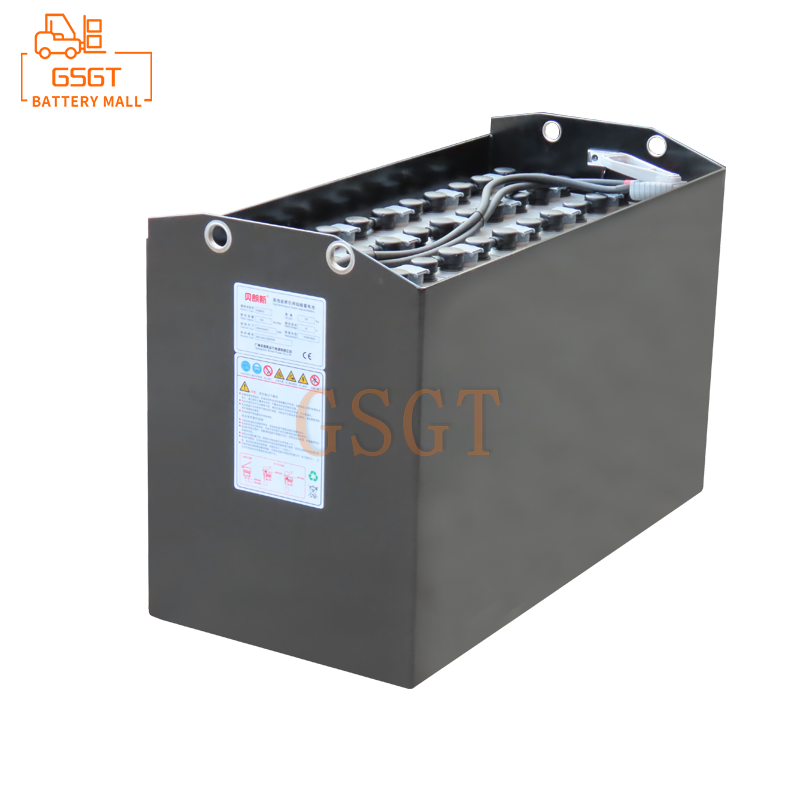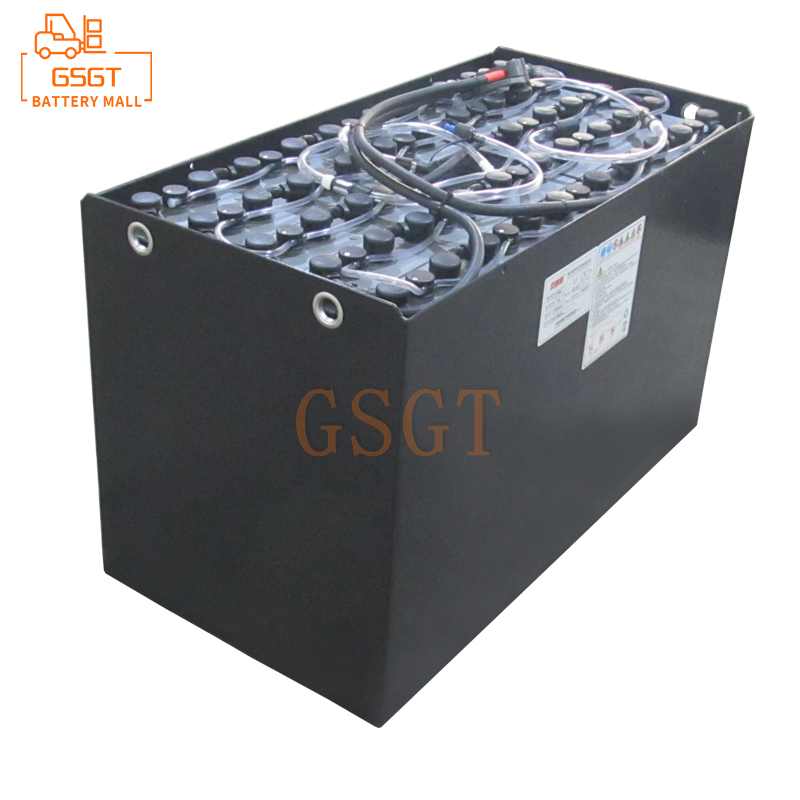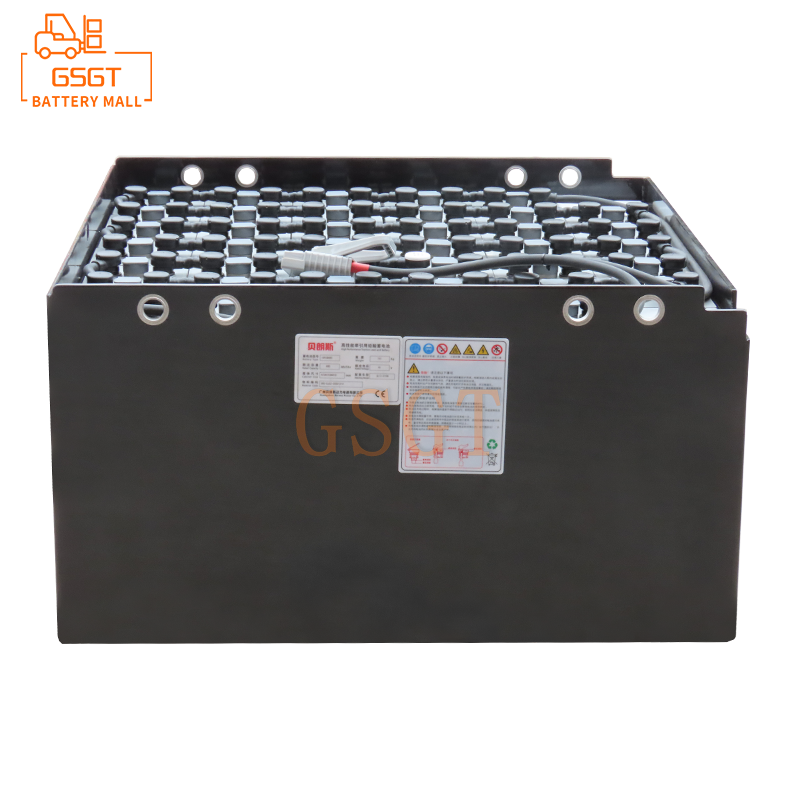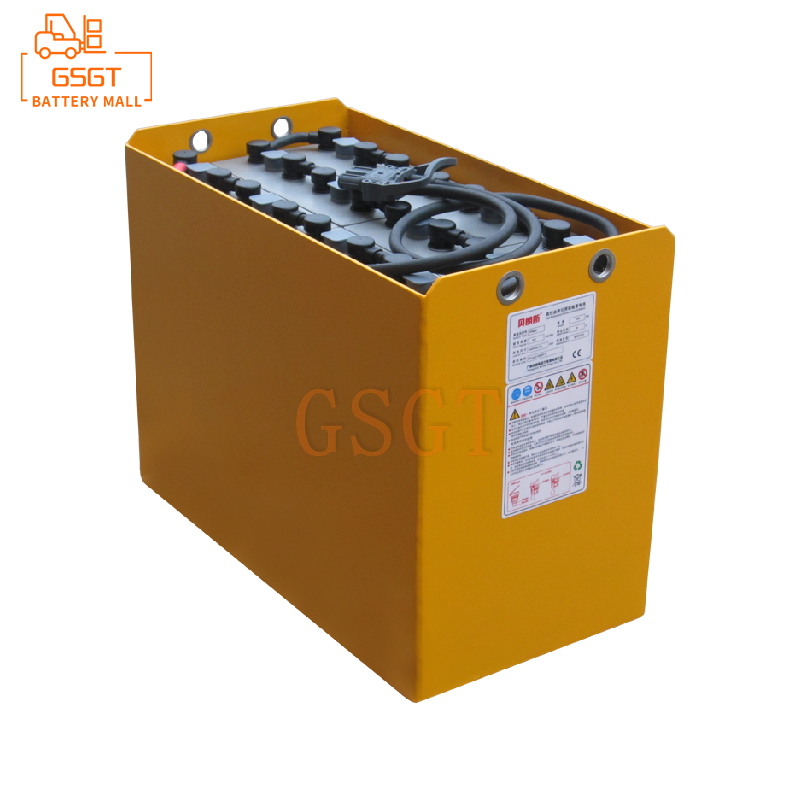Time:2025-06-12 10:58:54
Browse:599
In modern logistics and warehousing operations, forklifts, as important handling equipment, the performance and lifespan of their power source - lead-acid batteries - directly affect the production efficiency and operating costs of enterprises. Forklift lead-acid batteries have occupied an important position in the market due to their stable performance, mature technology and relatively low cost. However, if not maintained properly, it will not only lead to a decrease in battery capacity and a shortened service life, but also may cause safety hazards. Therefore, it is of vital importance to master the correct maintenance methods for forklift lead-acid batteries.
1. Gain a thorough understanding of the working principle and structure of forklift lead-acid batteries
The working principle of lead-acid batteries is based on electrochemical REDOX reactions. It is mainly composed of positive plates, negative plates, separators, electrolyte and casing, etc. The active material on the positive plate is lead dioxide (PbO₂), that on the negative plate is spongy pure lead (Pb), and the electrolyte is an aqueous solution of sulfuric acid (H₂SO₄). During the discharge process, the active substances on the positive and negative plates undergo chemical reactions with the electrolyte, converting chemical energy into electrical energy to provide power for the forklift. During charging, through the action of an external power source, electrical energy is converted back into chemical energy, restoring the active substances to their initial state, thus enabling the battery to be recycled. Understanding this principle helps us comprehend the impact of various operations on battery performance during the maintenance process.
2. Key Points for Inspection and Maintenance during Daily Use
(1) Inspection and replenishment of electrolyte
The electrolyte plays a crucial role in the chemical reactions of lead-acid batteries, and its liquid level and density directly affect the performance of the battery. During daily inspections, transparent glass tubes or dedicated liquid level measuring tools should be used to check the electrolyte level. Under normal circumstances, the electrolyte level should be 10 to 15 millimeters higher than the top of the plates. If the liquid level is too low, the plates will be exposed to the air, causing sulfation of the plates and reducing the battery capacity. If the liquid level is too high, the electrolyte is prone to overflow, corroding the battery casing and other components of the forklift.
When the electrolyte level is found to be insufficient, distilled water or special lead-acid battery replenishment fluid should be added. The use of tap water is strictly prohibited. Because tap water contains various impurities such as calcium, magnesium and other ions, these impurities will undergo chemical reactions inside the battery, affecting the performance and lifespan of the battery. When adding electrolyte, it should be done slowly to avoid splashing. If it accidentally splashes onto the skin or eyes, rinse immediately with plenty of water and seek medical attention promptly.
In addition, the density of the electrolyte needs to be measured regularly. Generally speaking, the density of the electrolyte is between 1.28 and 1.30g/cm³ (at 25℃), and there may be slight differences among batteries from different manufacturers and models. By measuring the density, the degree of battery discharge and the state of charge can be determined. If the density value deviates too much from the normal range, it may indicate that the battery is faulty and further inspection and handling are required.
(2) Inspection of the battery's appearance
During daily use, carefully inspect the appearance of the battery. Check if the battery casing is damaged, cracked or deformed. If the casing is found to be damaged, stop using the battery immediately and replace it to prevent electrolyte leakage and safety accidents. At the same time, check whether the battery terminals are corroded or loose. Corrosion of the terminal posts will increase the contact resistance, causing heat generation during charging and discharging, which affects the battery performance. Loose terminals may cause poor circuit contact, leading to power interruption and other problems during the operation of the forklift.
For the corrosion of the terminal post, a baking soda solution can be used for cleaning. Mix baking soda with water in a certain proportion. Use a soft-bristled brush to dip the solution and gently scrub the terminal posts and connection wire terminals. After the corrosion is completely removed, rinse with clean water and dry. After cleaning is completed, apply a layer of Vaseline or a special battery terminal protector on the terminal posts and connection wire terminals to prevent further corrosion.
(3) Monitoring of battery temperature
Lead-acid batteries generate a certain amount of heat during charging and discharging, causing the battery temperature to rise. Under normal circumstances, the battery temperature should be between 25 and 40 degrees Celsius. If the temperature is too high, it will accelerate the evaporation of the electrolyte and the aging of the plates, reducing the service life of the battery. If the temperature is too low, it will slow down the chemical reaction rate of the battery, resulting in a decrease in battery capacity.
During the operation of the forklift, it is necessary to pay attention to observing the temperature of the battery. When the battery temperature is found to be too high, the forklift should be stopped immediately. Let the battery cool down naturally and avoid continuing to charge or discharge at high temperatures. At the same time, check the ventilation of the battery to ensure there is a good ventilation environment around the battery to prevent heat accumulation. If the battery temperature remains abnormal for a long time, it may be due to faults such as short circuits inside the battery, which require professional inspection and repair.
3. Correct operation and Maintenance during charging and discharging Processes
(1) Reasonable charging operation
Charging is an important part of the maintenance of lead-acid batteries. Before charging, the electrolyte level and temperature of the battery should be checked first to ensure they meet the charging requirements. If the electrolyte level is too low, distilled water or supplementary liquid should be added first. If the battery temperature is too high, you should wait for it to cool down before charging.
Choosing the right charger is of vital importance. Chargers that match the specifications of forklift lead-acid batteries should be used. Batteries of different capacities and voltages require chargers with different parameters. An incorrect charger may lead to undercharging or overcharging, both of which can cause damage to the battery. During the charging process, pay attention to observing the indicator lights of the charger and parameters such as charging current and voltage to ensure that the charging process is normal.
The charging of lead-acid batteries is generally divided into three stages: constant current charging, constant voltage charging and float charging. During the constant current charging stage, the battery is charged with a constant current, gradually increasing the battery voltage. When the battery voltage reaches a certain value, it enters the constant voltage charging stage, maintaining a constant charging voltage while the charging current gradually decreases. When the charging current decreases to a certain extent, it enters the float charging stage, where the battery is supplemented with a smaller current to maintain a fully charged state. During the charging process, do not interrupt the charging at will to avoid affecting the charging effect and lifespan of the battery.
In addition, avoiding overcharging is also crucial. Overcharging can cause the battery to heat up, accelerate the decomposition of the electrolyte and the corrosion of the plates, and shorten the battery's lifespan. Most chargers have overcharge protection functions, but it is still necessary to regularly check the performance of the charger to ensure that the overcharge protection is working properly. Generally speaking, when the battery is fully charged, charging should be stopped in time to avoid being in an overcharged state for a long time.
(2) Correct discharge management
During the operation of forklifts, it is necessary to reasonably control the depth of battery discharge. The depth of discharge of lead-acid batteries is closely related to the battery's service life. Excessive discharge can lead to sulfation of the plates, seriously affecting the battery's performance and lifespan. It is generally recommended to keep the battery's discharge depth within 80%, that is, when the battery's power remains at around 20%, it should be charged in a timely manner.
During the operation of forklifts, it is necessary to avoid frequent sudden acceleration, sudden braking and long-term heavy-load work. These operations can cause the battery to discharge a large current instantaneously, causing damage to the battery. At the same time, pay attention to the battery level indicator light on the forklift's dashboard. When the battery level indicator light shows that the battery is low, the forklift should be driven back to the charging area as soon as possible for charging.
For forklifts that are not used for a long time, it is also necessary to manage the battery discharge appropriately. If the battery is left idle for a long time, self-discharge will occur, resulting in a decrease in battery power. Therefore, at regular intervals (generally half a month to one month), the battery should be subjected to a shallow discharge and then recharged to activate the active substances in the battery and extend its lifespan.
4. Regular maintenance and professional upkeep
In addition to daily inspection and maintenance, forklift lead-acid batteries also need to undergo comprehensive maintenance and care on a regular basis. It is generally recommended to conduct a thorough inspection and maintenance of the battery every 3 to 6 months.
Perform equalization charging on the battery regularly. Equalization charging is to make up for the voltage differences among the individual batteries in the battery pack, so that each battery can reach a fully charged state. When performing equalization charging, operations should be carried out in accordance with the battery manufacturer's instructions, and the charging time and voltage should be well controlled to avoid damage to the battery due to excessive equalization charging.
Conduct capacity tests on the battery regularly. Through capacity testing, one can understand whether the actual capacity of the battery has decreased and judge the health condition of the battery. Capacity testing generally requires the use of professional battery capacity testers and is carried out in accordance with the prescribed testing methods. If you find that the battery capacity has dropped significantly, falling below 80% of the rated capacity, it may be necessary to consider replacing the battery.
In addition, it is recommended to send the lead-acid battery of the forklift to a professional maintenance and repair institution for regular professional maintenance. Professionals have more extensive experience and more specialized equipment, enabling them to conduct more in-depth inspections and maintenance of batteries, promptly identify potential problems, and take corresponding measures to handle them.
5. Safety Precautions
In the process of maintaining the lead-acid battery of a forklift, safety always comes first. Since the electrolyte in lead-acid batteries is a corrosive sulfuric acid solution and the batteries produce flammable and explosive gases such as hydrogen during charging and discharging, it is essential to strictly follow the safety operation procedures.
When performing battery maintenance operations, personal protective equipment such as protective gloves and goggles should be worn to prevent the electrolyte from splashing onto the skin and eyes. The operation site should maintain good ventilation to prevent hydrogen accumulation from causing explosion accidents. Smoking or using open flames near the battery is prohibited to prevent hydrogen from being ignited.
In the event of electrolyte leakage, immediate adsorption treatment should be carried out with sand or special adsorption materials to prevent the electrolyte from corroding the ground and other equipment. The leaked electrolyte should be treated as hazardous waste and must not be discharged at will.
In conclusion, to properly maintain the lead-acid batteries of forklifts, we need to start from multiple aspects such as daily use, charging and discharging processes, regular maintenance, and safe operation, and strictly follow the operating procedures. Only in this way can the service life of the battery be prolonged, the working efficiency of the forklift be improved, the operating costs of the enterprise be reduced, and safety during the usage process be ensured at the same time. With the continuous development of technology, although new types of batteries keep emerging, lead-acid batteries still hold an important position in the forklift field at the present stage. Mastering their maintenance methods has significant practical significance for the logistics and warehousing industry.

$2450

$3050

$5710

$1690

MESSAGE
Professional And Efficient
Security
Affordable Price
Professional Services